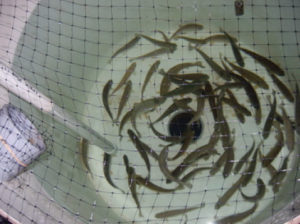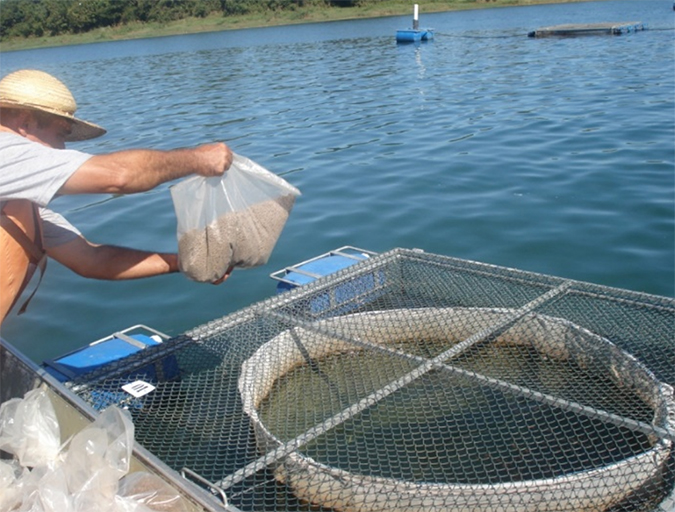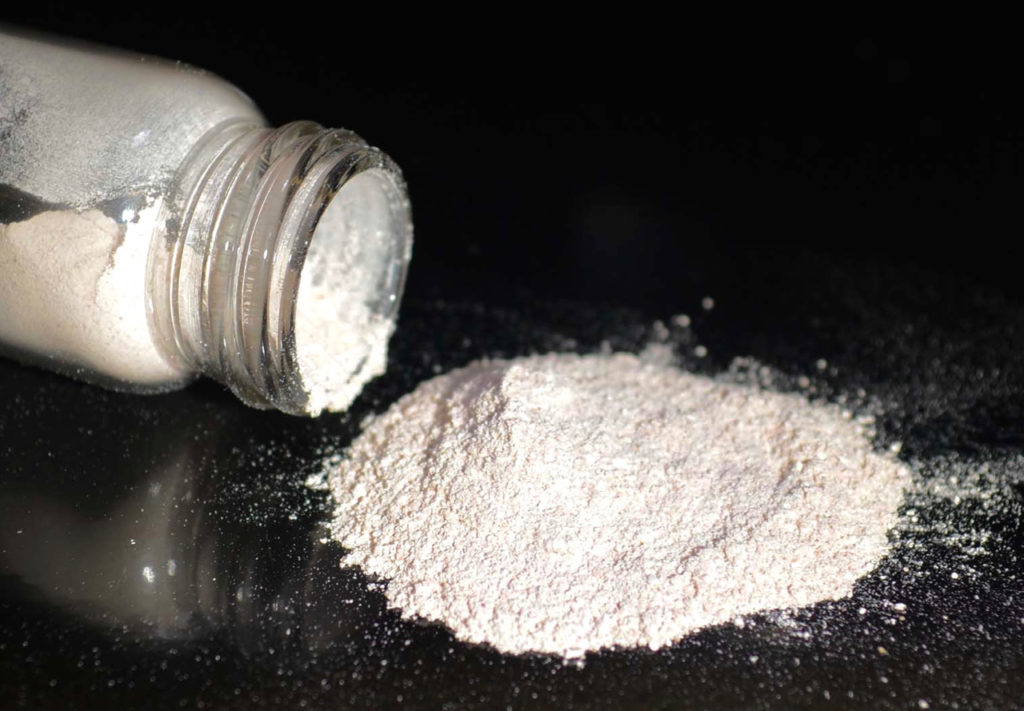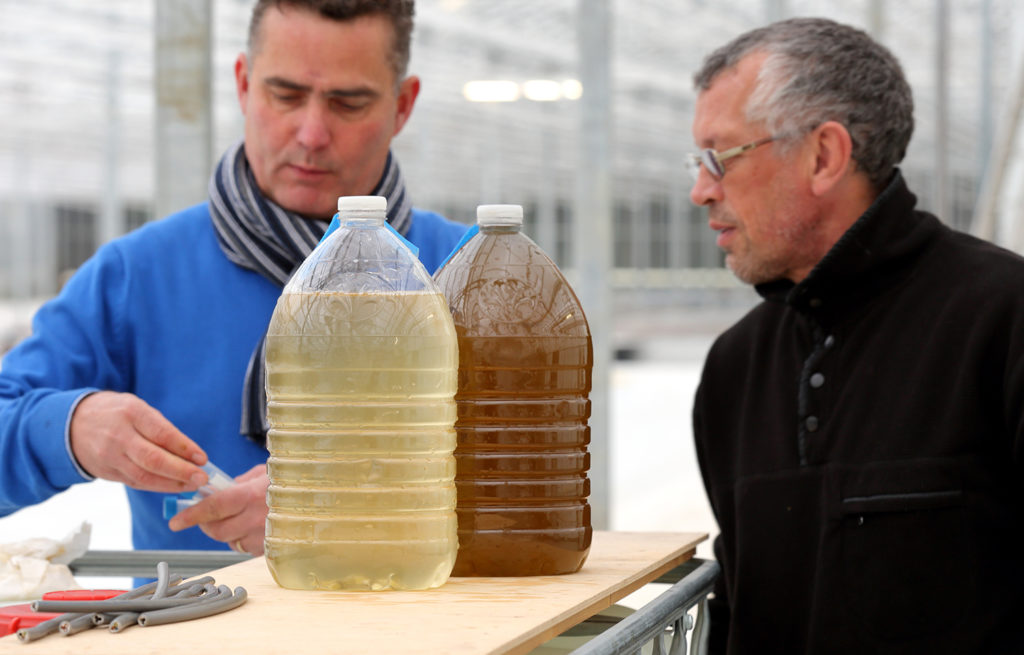Increasing lipid digestibility could enhance DHA retention and DHA content in fish products

The rapid growth in the aquaculture industry has put pressure on demands for feed ingredients from marine origins, particularly fish oil. Since the world’s total production of fish oil is static, and global demand for aquafeeds exceeds the available supplies, alternatives to fish oil need to be considered.
Due to the availability and lower cost of oilseed crops, vegetable oils appear to be a logical replacement for fish oil in feed. However, while fish oil is an excellent source of omega-3 long-chain polyunsaturated fatty acids (LC-PUFAs), most vegetable oils are relatively poor sources of these fatty acids and in particular are devoid of eicosapentaenoic acid (EPA) and docosahexaenoic acid (DHA).
Studies have shown that replacement of fish oil with vegetable oils in salmonid diets significantly lowered the composition of EPA and DHA in fish tissues, thereby compromising the nutritional and beneficial health properties of consuming the fish. Therefore, the replacement of fish oil with vegetable oils while maintaining adequate levels of EPA and DHA in fish products remains a significant challenge for the industry.
Microalgae
A more promising fish oil replacement is microalgae. Rich in omega-3 fatty acids, microalgae are single-celled organisms that range in size from a few micrometers to a few hundred micrometers. They have the ability to produce EPA and DHA and are the primary source of these lipids in marine environments.
Of the estimated 30,000 species of microalgae, only a few hundred have been investigated for their chemical compositions. Only a few are currently of commercial significance as nutritional supplements in human and animal nutrition and for use in cosmetics and biofuel production. Currently, microalgae are used in aquaculture as pigments and as an LC-PUFA source in larval feeds for mollusks, shrimp and abalone. More recently, the omega-3 content of microalgae has been of particular interest as a potential fish oil replacement.
Trout trial
In research by the authors conducted at the Prairie Aquaculture Research Centre to evaluate the potential of algae biomass as an alternative DHA source in aquafeed, triplicate groups of rainbow trout with individual body weights of about 70 g were set up in a randomized 84-day trial in which the fish were fed one of four diets. The control diet (F.O.) was based on fish oil as a source for key fatty acids. In diet C.O., fish oil was replaced with canola oil. Diet FO+CO had equal amounts of fish oil and canola oil, while diet CO+A contained a 70:30 blend of canola oil and an algae product with 12.5 percent DHA.
The diets were formulated to contain 386.2 g/kg digestible crude protein and 17.58 MJ/kg digestible energy, and met all other nutrient requirements of rainbow trout. Canola oil was added to balance the diet for digestible energy, and the CO+A and the CO+FO diets were formulated to contain the same level of DHA. The fish were fed twice daily to visual satiety, and feed intake was measured weekly.
Before the experiment, six fish were selected at random from the whole population to determine initial whole body fatty acid content. The fish were randomly collected, killed, pooled and homogenized for analysis. After the last day of feeding, three fish from each tank were randomly processed in the same manner.
Results
Partial or total replacement of fish oil with canola oil or a blend of canola oil and algae had no significant effect on trout growth performance (Table 1). As expected, the whole body fatty acid composition of fish generally reflected that of the diets. Whole body lipid content and lipid retention efficiency were not significantly affected by the feed treatments (Table 2).
Zatti, Mean growth performance data of rainbow trout, Table 1
| Parameter | Diet C.O. | Diet F.O. | Diet CO+FO | Diet CO+A | Standard Error | P Value |
|---|
Parameter | Diet C.O. | Diet F.O. | Diet CO+FO | Diet CO+A | Standard Error | P Value |
|---|---|---|---|---|---|---|
| Initial weight (g) | 68.5 | 70.6 | 66.7 | 70.5 | 2.837 | 0.73 |
| Final weight (g) | 216.9 | 230.0 | 209.7 | 220.6 | 10.529 | 0.61 |
| Average daily gain (g) | 1.8 | 1.9 | 1.7 | 1.8 | 0.132 | 0.78 |
| Feed intake (g/fish) | 198.5 | 201.1 | 181.6 | 204.6 | 5.340 | 0.60 |
| Specific growth rate (%/day) | 1.4 | 1.4 | 1.4 | 1.4 | 0.078 | 0.97 |
| Feed-conversion ratio | 1.4 | 1.3 | 1.2 | 1.4 | 0.085 | 0.62 |
Zatti, Body content and retention efficiency, Table 2
| Parameter | Diet C.O. | Diet F.O. | Diet CO+FO | Diet CO+A | Standard Error | P Value |
|---|
Parameter | Diet C.O. | Diet F.O. | Diet CO+FO | Diet CO+A | Standard Error | P Value |
|---|---|---|---|---|---|---|
| Content (mg/g) | ||||||
| Total lipid | 150.90 | 122.30 | 117.00 | 146.30 | 6.12 | 0.11 |
| Alpha-linolenic acid | 1.39c | 4.03b | 4.09b | 7.23a | 0.66 | < 0.01 |
| Eicosapentaenoic acid | 11.63a | 2.09b | 3.43b | 1.92b | 1.22 | < 0.01 |
| Docosahexaenoic acid | 16.44a | 5.26b | 7.50b | 8.68b | 1.25 | < 0.01 |
| Retention (%) | ||||||
| Total lipid | 77.70 | 67.80 | 68.80 | 77.30 | 3.82 | 0.76 |
| Alpha-linolenic acid | 48.40 | 22.20 | 42.70 | 43.50 | 4.34 | 0.12 |
| Eicosapentaenoic acid | 55.30 | 145.10 | 21.10 | 109.30 | 19.41 | 0.09 |
| Docosahexaenoic acid | 111.50b | 688.90a | 66.50b | 72.70b | 101.16 | 0.02 |
The sources of oil did not significantly impact the final lipid contents of the fish (P = 0.11). Whole body EPA and DHA contents were higher with fish oil-based feed than in the other dietary treatments, but similar between the CO+FO and CO+A groups, suggesting that algae can effectively supply omega-3 fatty acids. Also interesting was the fact that total or partial replacement of fish oil with canola oil or the canola blends enhanced alphalinolenic acid content, mainly due to the high level of the fatty acid in these diets.
There was no significant difference in total lipid retention among the dietary treatments. Apparent retention of total lipid ranged from 67.8 to 77.7 percent, suggesting that about 22 to 32 percent of the lipid was used for energy. There was a trend (P = 0.09) toward higher retention of EPA in the C.O. and CO+A fish compared to the other two groups.
Furthermore, the retention of EPA in fish in the C.O. and CO+A treatments was over 100 percent, indicating a net synthesis of this fatty acid. Fish that received the diet with canola oil only had significantly higher DHA retention than fish fed the other three diets. As expected, EPA was less efficiently retained than DHA in the bodies of the rainbow trout.
Perspectives
The replacement of fish oil and particularly DHA in aquaculture diets is one of the central problems threatening to constrain the growth of aquaculture. Although feeding diet with canola oil and algae in this trial resulted in lower DHA content and poorer DHA retention than those in fish that received the fish oil diet, algae has the potential to replace fish oil in canola-oil-based diets. Fish fed the CO+A feed had final DHA content and apparent DHA retention similar to fish that received the CO+FO diet, while growth performance was not compromised.
Increasing the lipid digestibility of algae could likely further enhance DHA retention and DHA content in fish products. Extracting oil could be a possible approach to achieve greater digestibility from the algal product, but this would increase the costs of using algae oil signi-ficantly. Since extrusion of fish feed can increase the digestibility of nutrients, a further recommendation would be to determine the optimal extrusion parameters required to maximize the digestibility of the algae/canola oil feed.
(Editor’s Note: This article was originally published in the July/August 2014 print edition of the Global Aquaculture Advocate.)
Now that you've reached the end of the article ...
… please consider supporting GSA’s mission to advance responsible seafood practices through education, advocacy and third-party assurances. The Advocate aims to document the evolution of responsible seafood practices and share the expansive knowledge of our vast network of contributors.
By becoming a Global Seafood Alliance member, you’re ensuring that all of the pre-competitive work we do through member benefits, resources and events can continue. Individual membership costs just $50 a year.
Not a GSA member? Join us.
Authors
-
Dr. Kyla M. Zatti
Research Associate
University of Saskatchewan
51 Campus Drive
Saskatoon, Saskatchewan, Canada S7N5A8 -
Chuyuan Zhang
Doctorate Student
University of Saskatchewan
51 Campus Drive
Saskatoon, Saskatchewan, Canada S7N5A8 -
Cláudia Figueiredo-Silva
Aqua Nutrition Research Manager
Evonik Industries A.G.
Hanau, Germany -
Dr. Andreas Lemme
Aqua Nutrition Research Manager
Evonik Industries A.G.
Hanau, Germany -
Dr. Murray D. Drew
Professor and Associate Academic Dean
University of Saskatchewan
51 Campus Drive
Saskatoon, Saskatchewan, Canada S7N5A8
Tagged With
Related Posts

Health & Welfare
Aiding gut health with a natural growth promotor
A study with Nile tilapia conducted in commercial production cages in Brazil showed the potential – in the absence of major disease threats – of a commercial, natural growth promotor that modulates the microbiota (inhibiting growth of pathogenic bacteria and promoting growth of beneficial bacteria) and inhibits quorum sensing.

Aquafeeds
A new nutrient for aquaculture, from microbes that consume carbon waste
Biotechnology firm NovoNutrients aims to produce a line of nutraceutical aquafeed additives as well as a bulk feed ingredient that can supplement fishmeal. Its process includes feeding carbon dioxide from industrial gas to a “microbial consortium” starring hydrogen-oxidizing bacteria.

Innovation & Investment
Algae innovators aim to freeze out early-stage shrimp losses
A greenhouse in Belgium believes its innovative shrimp feed product, made from freeze-dried microalgae, packs the necessary nutrients for the crustacean’s most vulnerable life stage: the first three days of its life.

Innovation & Investment
Aquafeed ingredient AlgaPrime wins GAA Innovation Award
A proliferation of alternative feed ingredients has allowed aquaculture to extend the natural resources it depends on. AlgaPrime, packed with the long-chain omega-3 fatty acid DHA, is being recognized as a game-changing innovation for aquaculture feeds.



